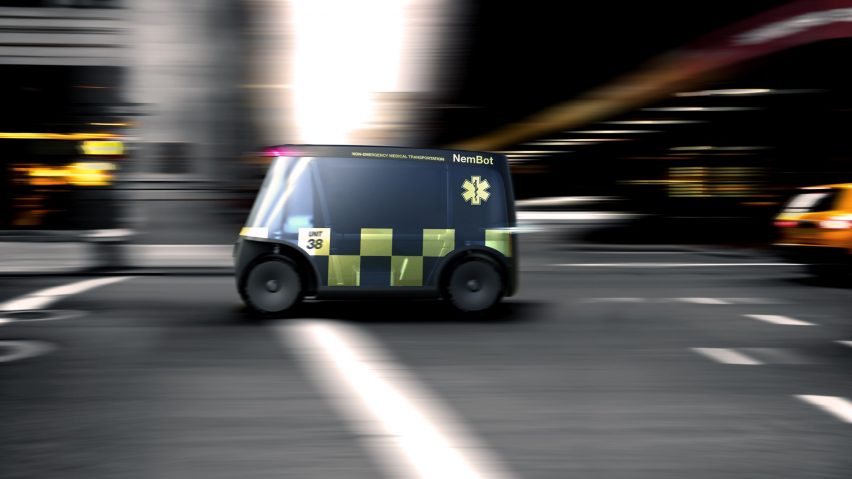
Jens Martin Skibsted and Manyone design "pandemic-proof" non-emergency medical transport system
Biomega founder Jens Martin Skibsted has created NemBot, a concept for convoys of electric driverless vehicles to transport goods and patients around cities in isolation pods.
The Non-Emergency Medical Transportation (NEMT) system was created by a team led by Skibsted at design consultancy Manyone in response to the coronavirus pandemic.
NemBot would allow people such as asthma or cancer patients to be moved around a city in their own quarantined cabins without putting key workers at risk.

Skibsted designed the NemBots during the coronavirus lockdown as a response to what he called "very old school and rudimentary" urban mobility solutions for NEMT and cargo delivery.
Typically, this type of transportation allows those who suffer from conditions such as diabetes, heart disease, cancer and asthma to be taken safely to their appointments, or enables the delivery of medical supplies.
"When Covid-19 hit, we realised that many of the freight issues were the same ones that prohibited a good mobility response to the pandemic," said the Danish designer.
"The existing solutions just clog up the city and pollute and hinder economic development," he added.
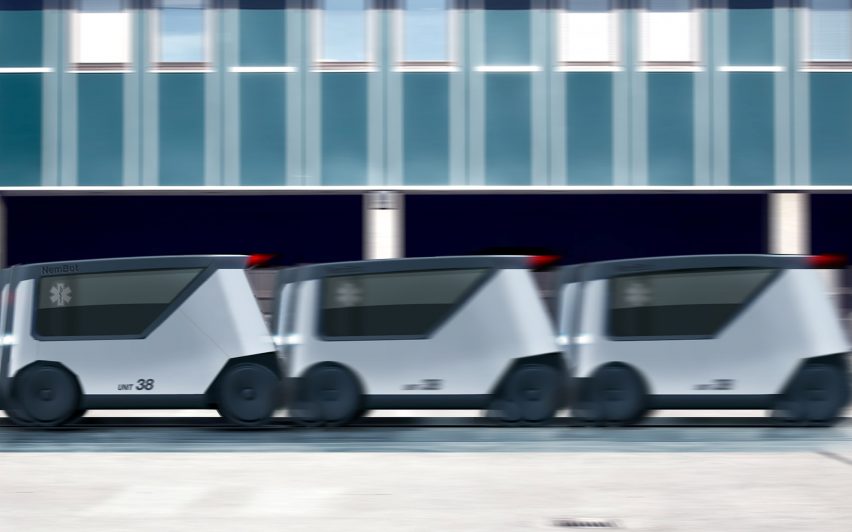
As a concept, NemBot reimagines both freight and non-emergency medical transport as convoys of six small electric vehicles. Skibsted imagined the pod caravan structured "lego brick-like" in two rows of three.
These NemBots would be attached to a single human-operated vehicle, occupying less space than a standard fire truck. This vehicle could travel into cities from another location, before dispersing the convoy into individual pods to serve different areas.
As Skibsted explains, current NEMT services require manned vehicles, putting workers at risk. The vehicles themselves are bulky and aren't designed to offer individuals a quarantined environment.
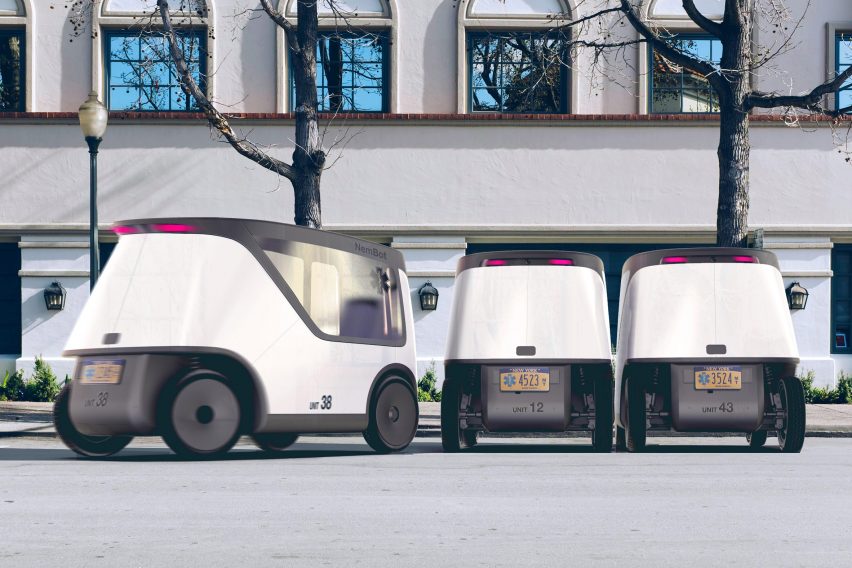
"The coronavirus has highlighted that we need better and more agile solutions to safely transport patients, medicine, testing samples and – sometime soon – vaccines," said the designer.
"Current public transport solutions struggle with transporting large groups of people while guaranteeing safe distancing, isolation and sanitation," he added. "So we need more sensitive solutions to this complex logistical challenge."
NemBout could function both as a non-autonomous convoy road train for long distances, or a driverless last-mile solution for cities.

The basic interior cabin design would be adaptable to serve different transportation purposes.
The pods could, for instance, be used to deliver cargo such as medicine or samples via removable trolleys equipped with cryogenic units powered by the vehicle's battery system.
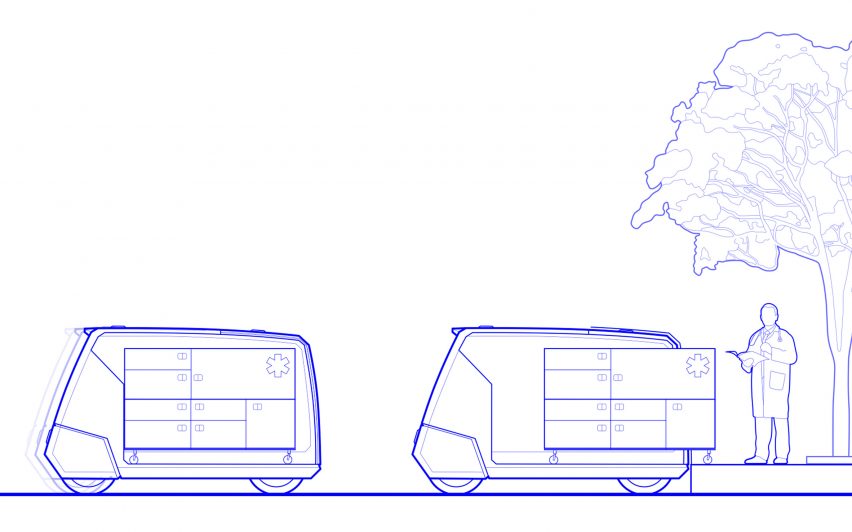
Alternatively, they could be modified to transport patients or commuters in isolation.
Despite being designed to accommodate just one person, the interior would be large enough to fit a sickbed and accompanying sanitation equipment.
By designing the pod with rear-wheel drive and steering, there would be more space in the front cabin to make room for items like medical trolleys, monitors and wheelchairs.
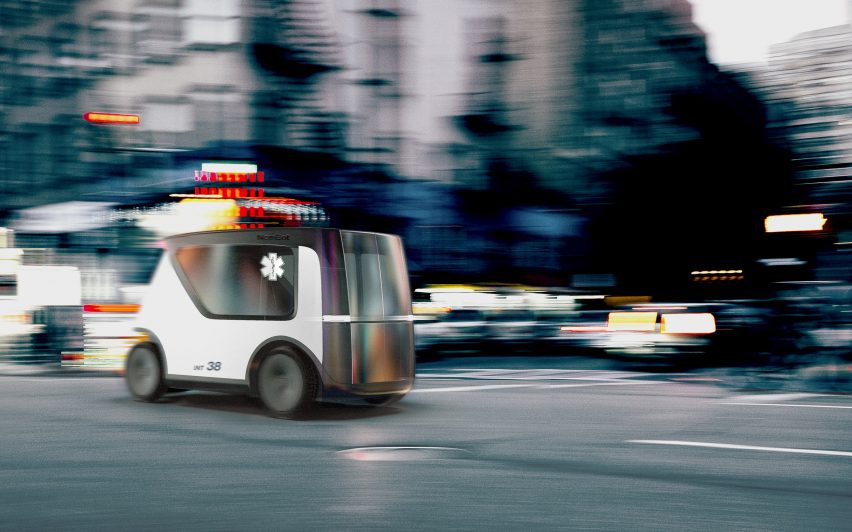
Ultra Violet (UV) sanitation systems would be included inside the NemBots to disinfect the cabin after each trip, as well as on the exterior to sanitise the surroundings while in transit. Both UV systems would be powered by the vehicle's battery.
Pre-set journeys could offer more efficient door-to-door transport, in turn reducing waiting times and the crowds of people at train stations or bus stops.
Automatic doors and voice control also reduce the number of touch-points needed to operate the vehicle.
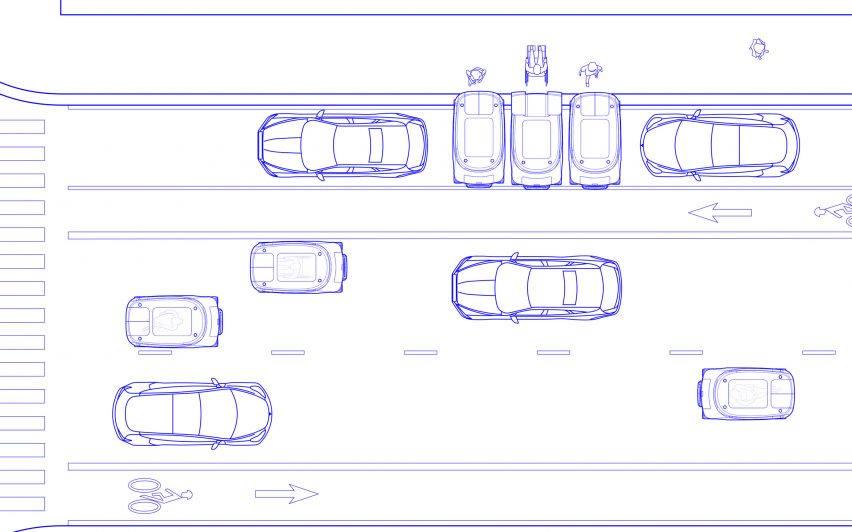
Post pandemic, the units could be re-appropriated for ordinary cargo delivery or waste collection.
Skibsted is a global partner at Manyone and heads its mobility design unit. He also founded bicycle brand Biomega in 1998 and has collaborated with designers including Marc Newson and KiBiSi – the Danish design studio co-founded by architect Bjarke Ingels.
In 2018 the brand created its first ever electric vehicle concept for cities, called SIN, which was designed as an affordable and sustainable mode of urban transport.